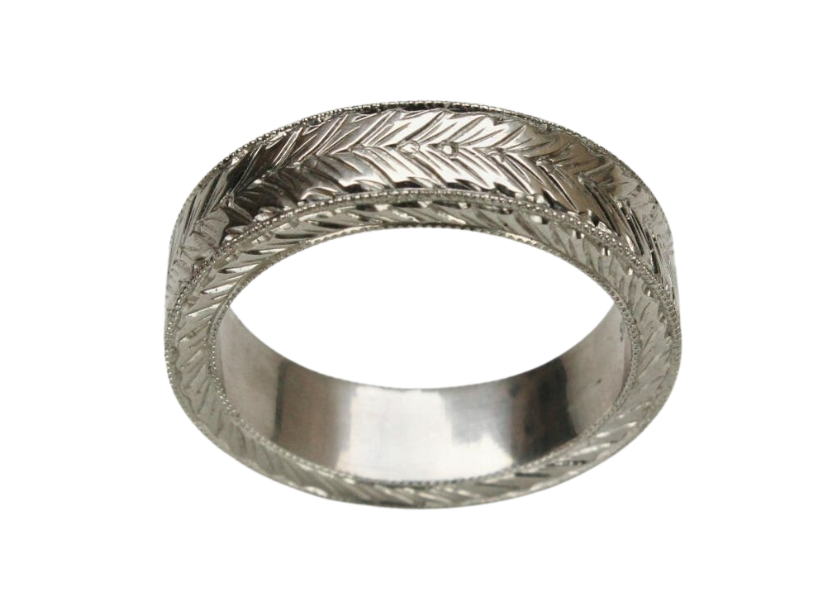Learn about the tradition of engagement rings and how they differ around the world
The tradition of adorning a bride’s finger with a sparkly symbol of love may feel like a given, but did you know that this custom can vary greatly worldwide?
While the Western tradition of a diamond engagement ring has gained widespread global popularity, there are still many regional differences. Let’s take a trip around the world and learn about the different engagement ring traditions that reign from Europe to Africa. Maybe you’ll come across one you’d like to incorporate into your love story!
North America
Western culture has popularized the diamond engagement ring around the world. While we see the introduction of new styles, metals, and gemstones, the core elements of this tradition remain the same.
North American Indigenous Cultures, on the other hand, have their own tradition. Rather than what we might consider being the “traditional” gold engagement ring, Indigenous brides often opt for silver rings decorated with natural-looking precious and semi-precious gemstones. They prize the organic aesthetic, with stones like turquoise and red coral being particularly popular.
Europe & The UK
Engagement ring traditions vary widely across Europe, but we can discuss some notable ones. Firstly, a diamond engagement ring is by no means the standard. Gemstones of various colors and cuts are the go-to throughout countries like France and England and have also become a mainstream alternative for Western brides.
One of the most unique engagement ring traditions takes place in Ireland with the infamous Claddagh ring. This ring tends not to have any gemstones at all and is instead an all-metal design of two hands holding a heart with a crown. The way you wear this ring serves as a universally understood relationship status. Depending on which hand you wear it and which way the crown is facing, the Claddagh ring will communicate whether you are single, in a relationship, engaged, or married.
Asia
In certain parts of India, engagement jewelry isn’t a ring at all! Many Indian brides are given a bangle decorated with jingling trinkets and precious stones. This becomes a part of her ornate bridal jewelry set, often composed of rings, bangles, necklaces, and nose rings.
In Hindu culture, brides are given a toe ring called a bichiya, composed of precious metals and gemstones. This tradition came from the old belief that the ring would press on a nerve in the toe connected to the female reproductive system to keep it healthy.
Africa
Beaded jewelry plays a big part in many African cultures. In Kenya, couples exchange beautifully beaded pieces that are intricately arranged according to status, religion, and region. This jewelry is meant to symbolize a couple’s union and communicate to others about their place within the larger community.
South America
Who said that only one person gets to wear an engagement ring? Certainly not the couples in Chile, where it is traditional for both the bride and groom to wear engagement rings. These engagement rings are worn on the right hand and then moved to the left after the marriage ceremony.
In Argentina, the entire focus is on the engagement ring, with wedding bands playing little to no part in the marriage tradition. Once a couple has exchanged engagement rings, they are no longer expected to swap rings during the wedding ceremony.
The Ring Finger Tradition
In the Western world, engagement rings and wedding bands are traditionally worn on the fourth finger of the left hand, but this isn’t the case everywhere!
The left-hand tradition is thought to date back to ancient Rome. At the time, the belief was that the fourth finger of the left hand contained a vein that connected directly to the heart, earning it the name of the Vena Amoris, or “vein of love.” Of course, modern science proves that all veins lead to the heart, debunking this old (albeit romantic) symbolism. Nonetheless, the left-hand tradition remains widespread.
In some Catholic or Christian Orthodox cultures, the opposite custom is true. In Eastern Europe, for example, wedding and engagement rings are worn on the right hand. This is thought to hail from the Christian cross, which is done with the right hand, making the left anti-Christian. Therefore, in cultures where this religious symbolism remains important, wedding rings are worn on the right hand to symbolize holy matrimony – quite literally.
Ultimately, your engagement ring is a completely personal decision, from how you want it to look and how you want to wear it. The beauty of these different engagement ring traditions is how they influence one another around the world. See something you like? There’s no reason you can’t do it too!



